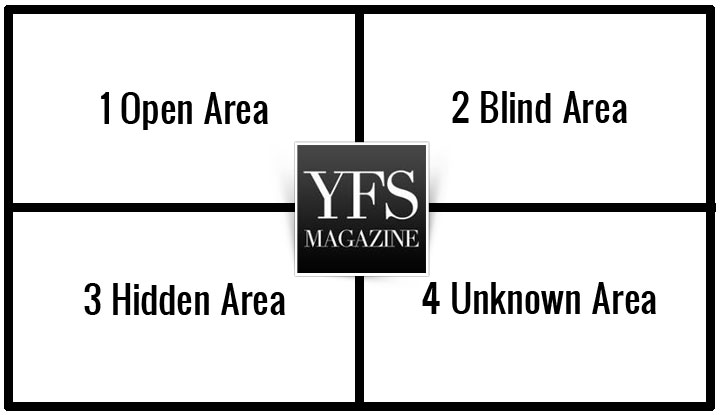Imagine a group composed of six types of people: a person who does all the work, a bossy and pushy member, a slacker colleague, someone who panics all the time, a pessimistic peer, and a team leader who’s running out of ways to keep them all together.
In a fast-paced workplace where pressure can affect employees’ relationship with one another, it is the team leader’s job to make sure everyone can do their tasks while maintaining a friendly, professional bond.
Building an effective team involves knowing the capabilities and limitations of each team member. And the Johari Window is one essential method to bring out the best in every person.
The Johari Window
American psychologists Joseph Luft and Harry Ingham formulated a way to keep communication lines open, among people in a group, through the use of the Johari Window.
The Johari Window is a model for self-improvement and awareness that can facilitate better understanding among groups. It is shaped as a window and composed of four quadrants, namely: the Open Area, Blind Area, Hidden Area, and Unknown Area.
Adjectives that describe a person, applicable in the area, are placed in every quadrant. The window is a representation of a person’s character divided into four areas that can help one to know themselves better, in order to better contribute to the company.
Team building sessions can incorporate the Johari Window activity. As a team leader, utilizing this tool will let members of the group understand their performance and work ethics, while facilitating an open-minded environment where criticism is seen in a positive light.
Here’s a deeper look at each of the four quadrants:
-
The Open Area
The Open Area is where general knowledge details are located. This includes information that the team member is aware of and what is known by others. In the workplace, the open area should be filled with information on how the person introduced themself to other employees. Phrases like “marketing expert” or “arrives earlier than the rest” apply in this area. For larger groups of employees who don’t encounter each other in the office most of the time, lasting impressions about the person can be included in the open area.
-
The Blind Area
Noticing your employee’s habits and mannerisms are unavoidable in an office setting. There are employees who are unaware of their capabilities. So, the goal is to open their eyes to their potential. As your team members become aware of things they don’t see in themselves they can improve weaknesses and hone skills they excel in. This is also opportunity for their coworkers to address workplace issues, not to degrade or offend an employee, but to let a person see the extent of their actions. Filling the blind area with ‘job well done’ praises can boost self-esteem and impact personal performance.
-
The Hidden Area
This quadrant should include information that is known to an employee, but unknown to others. It is worth noting that not everyone is an open book, so an employee’s refusal to divulge achievements and mundane life details may be uncomfortable. From a psychological standpoint, it is important to understand that some employees may not want to be singled out in a larger group, for exemplary performance, due to fear of extra attention. However, when possible, encouraging employees to share minor tidbits about themselves can reduce workplace barriers.
-
The Unknown Area
Lastly, the unknown area is where observations unknown to both the person and to others are found. This area consist of hidden talents waiting to be discovered, questions that need answers, or possibly repressed emotions. The unknown area can be discovered by peers or through an employee’s self-discovery. Inexperienced, or younger, employees who are generally more unsure of themselves and capabilities usually have a larger unknown area than the rest of your team. This area represents a unique way to discover things a person yearns to know about themself and information peers are interested to know.
The Johari Window strategy is a simple tool that can help improve company culture by illustrating and improving self-awareness among employees and team members. This model can also be used to assess and improve workplace relationships. Have you used the Johari Window model to help build your team?
Tedd Baldomaro is a business writer focusing on leadership and management skills, as well as self-development tips and career advice. He spends his free time reading books while listening to Bob Marley songs.
© YFS Magazine. All Rights Reserved. Copying prohibited. All material is protected by U.S. and international copyright laws. Unauthorized reproduction or distribution of this material is prohibited. Sharing of this material under Attribution-NonCommercial-NoDerivatives 4.0 International terms, listed here, is permitted.













